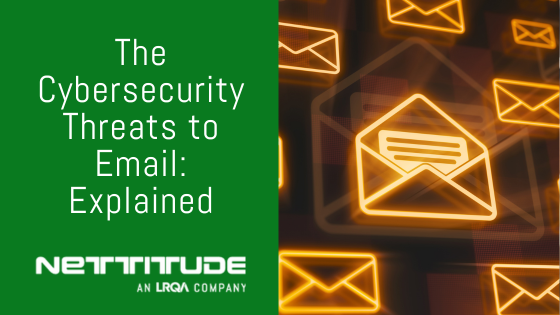Despite the numerous messaging apps available, email remains the most used method of formal communication. This is because email is still associated with professionalism. However, as emails are preferred among businesses, this also makes them an ideal target for cybercriminals.
Most data breaches occur for an economic reason—the attacker hopes to profit from the information they gain access to. Emails contain a lot of personal information already and can also be used to access other vital systems. This makes them an ideal entry point for hackers with varying motives.
Below we look at some of the cybersecurity threats to email that you may encounter, how to protect your company and cybersecurity solutions.
What Are the Threats to Email?
There are many multiple ways that attackers can target you, below we look at the top five threats to email systems.
1. Business Email Compromise
Business email compromise (BEC) is a sophisticated phishing attack targeting high-ranking employees. It is sometimes referred to as ‘CEO fraud’ due to its target.
With this method, attackers take time to study the behaviours of their victims. They use social media to gain insight and craft a highly realistic email to the victim. These emails are usually used to steal money or trade secrets from victims.
2. Spam Mail
Spam emails can occasionally be more than a mere annoyance; they can also be used to send varying types of attacks. These attacks can easily embed ransomware, trojans, and other types of malware. Attacks like these can also happen on a large scale, targeting multiple businesses.
3. Credential Phishing
Phishing emails are usually customised and aim to get the victim to give up personal information or credentials. For example, a credential-phishing email may resemble a letter from your bank asking you to confirm your account details and passwords. These can look incredibly convincing, with logos and branding from your bank. Similar attacks can be made on company accounts, asking victims to provide credentials that provide access to secure folders or systems.
4. DDoS Attacks
A traditional DDoS attack targets victims’ web servers with the goal of crashing them. An email DDoS attack works in a similar fashion. The attacker will send out mass emails to the business simultaneously. As a result, the email server will not be able to handle this number of requests and will crash. This is a common occurrence for B2B businesses where a large number of sales take place via email correspondence.
5. Zero-Day Attack
A zero-day attack occurs when there is a flaw in the software used by the victim. Hackers might exploit this vulnerability without the knowledge of the developers. These vulnerabilities can also be found in email software and servers.
How to Protect My Company's Email
There are a few ways to ensure you keep your email system safe. First, you will have to introduce protective measures to both the email client and the email server. To improve security on the client-side means you have to educate your employees on cybersecurity.
However, to avoid any human error, it is also important to also protect the server side. Here, you can use email security tools to scan emails for malware and other attacks.
For more information, contact us to learn more about our range of cybersecurity services.








